Curated MoMA Exhibitions: 1990s
Mary Lucier: Floodsongs.
March 12–June 6, 1999
Floodsongs is a video and audio installation presenting portraits of residents of Grand Forks, North Dakota. They are flanked at one end by a continuous projection of the exteriors and interiors of their flood-ravaged homes, and at the other end by hanging clusters of domestic artifacts salvaged from the flood. In the spring of 1997, the people of the vast region from Fargo to Winnipeg, Canada, experienced a great swelling of the Red River of the North. The resulting floods swept through the town of Grand Forks, while fire consumed eleven buildings in its downtown area. In Floodsongs, residents speak candidly of their lives before and after the flood, and reflect on the diversity and resilience of human experience. The simultaneous telling of their stories, accentuated by electronic processing, creates a contemporary form of oratorio.
Press Release
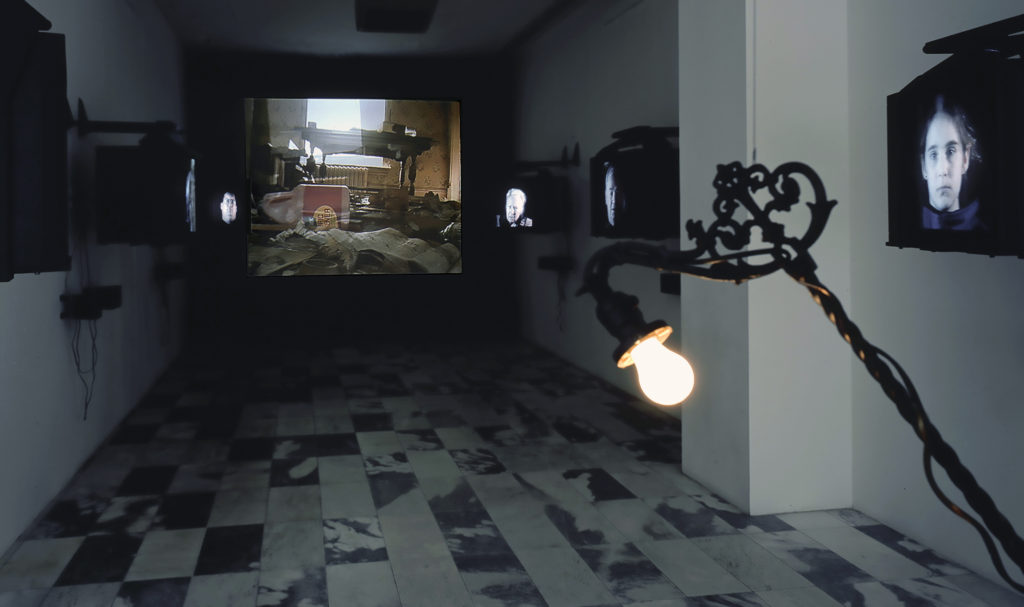
Image: Courtesy of the artist
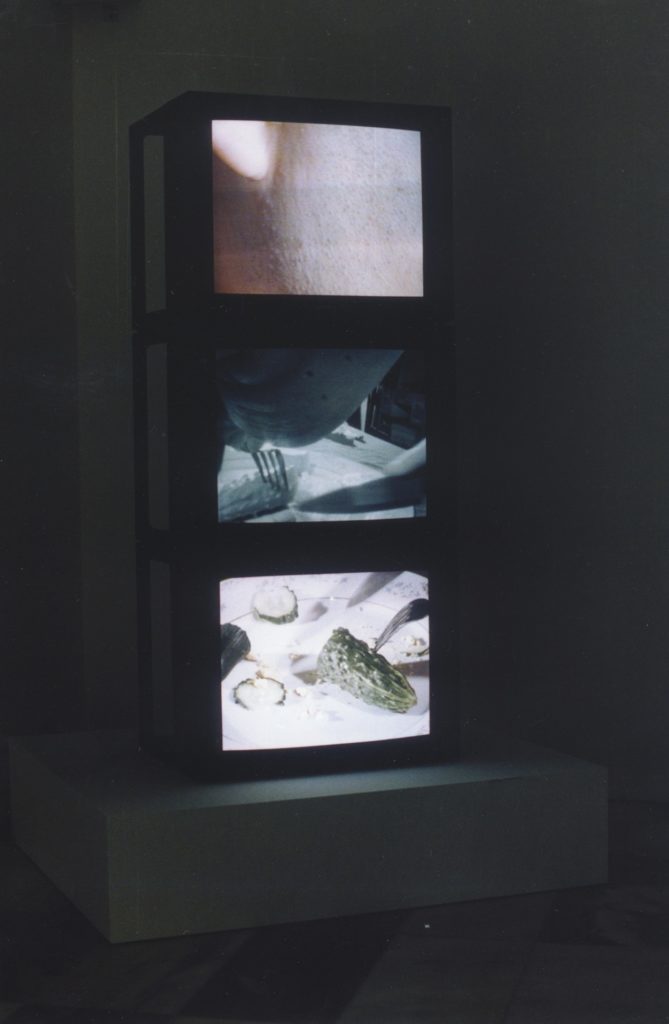
Image: Courtesy of the artist
Zhang Peili: Eating.
Oct. 28, 1998–Feb. 2, 1999
Hangzhou-based Chinese artist Zhang Peili takes a straightforward approach to creating video installations. His three-channel video sculpture Eating contains three stacked monitors with different perspectives of the same action. The top monitor depicts the image of a masticating cheek; the middle shows the movement between plate and mouth, recorded by a camera strapped to the diner’s arm; and the bottom image shows food disappearing from the plate.
Press Release
dot.jp: A Video Curator’s Dispatches from Japan. 1999
In a country known for innovative applications of technology, Japanese media artists use new digital tools in intriguing ways. London traveled in Japan to look at the sun rising on digital art. During her journey, she kept a daily online diary of her encounters with Japanese media artists and their work, including Hayao Miyazaki and Isao Takahata of Studio Ghibli.
Web site | Press Release
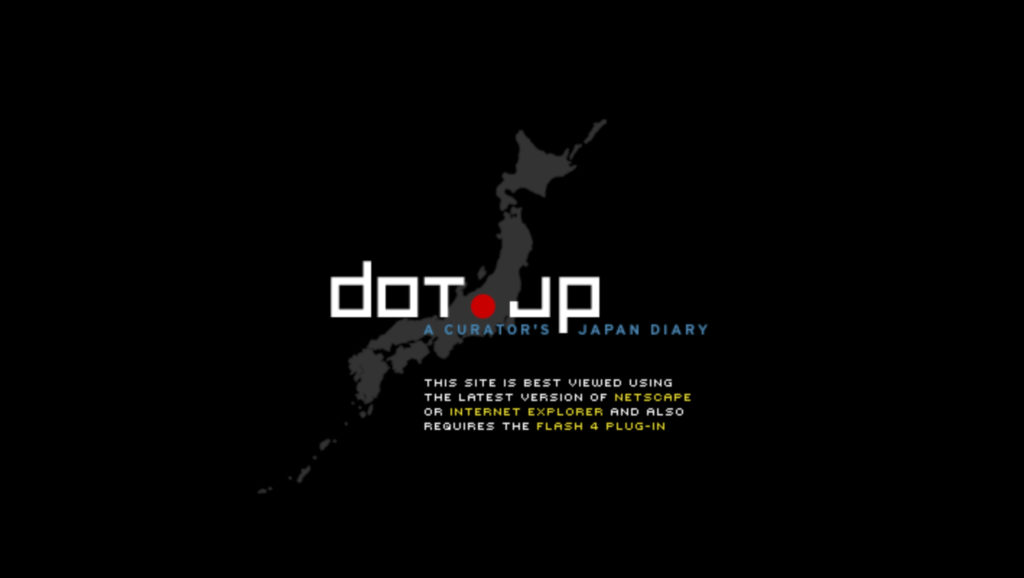
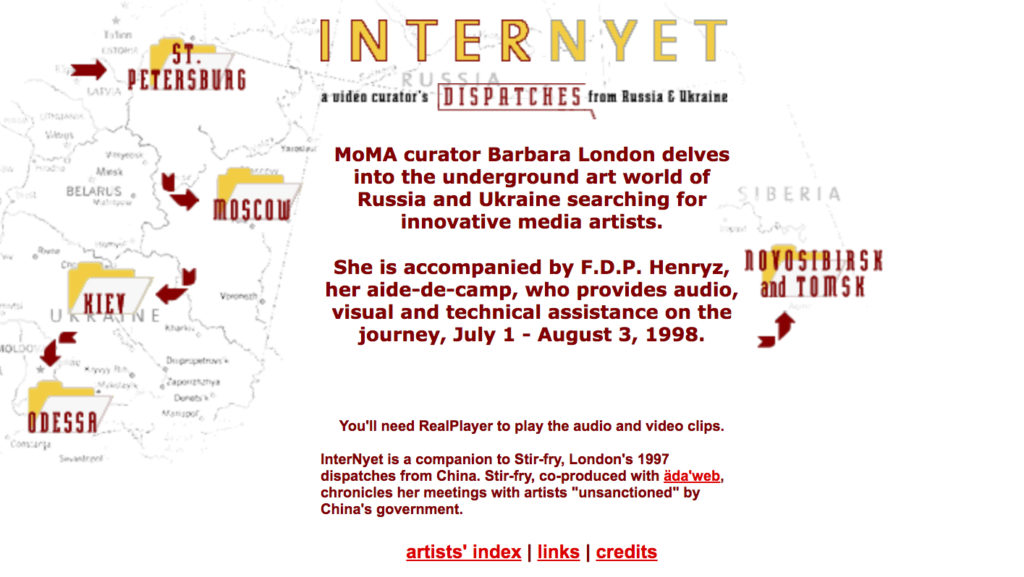
InterNyet: A Video Curator’s Dispatches from Russia and Ukraine. 1998
InterNyet presented daily dispatches sent from July 1 to August 5, 1998, by Barbara London. This online project gave exposure to contemporary art evolving in St. Petersburg, Moscow, Odessa, Kiev, and Novosibirsk. The site includes stills, video and audio clips, and text about the work of innovative artists, with commentary from London and art world denizens in Russia and Ukraine.
Web site | Press Release
Stir-Fry: A Video Curator’s Dispatches from China. 1997
This online project featured daily reports from the Middle Kingdom, delivered by Barbara London from September 2 to September 30, 1997, as she traveled between Beijing, Shanghai, Hangzhou, and Guangzhou, to meet media artists and see their work. Her dispatches chronicle her experiences and include written journal entries, photographs, and audio and video interviews conducted during studio visits and other encounters with members of the media art scene.
Web site | Press Release
Projects: Steve McQueen.
Nov. 28, 1997–Jan. 13, 1998
In the 1928 silent film Steamboat Bill, Jr., Buster Keaton stands in front of a house, unaware that its walls are buckling and about to collapse. He remains tranquil, unperturbed by the enveloping chaos. In Steve McQueen’s 1997 film/video work Deadpan, many walls come tumbling down. But these are not Keaton’s walls, sagging with age and falling every which way; McQueen’s structure is carefully built, and its demise is expressively documented. Shot from dramatic angles, with close-ups and bird’s-eye views, the resulting rhythm of monochromatic shapes distances the viewer from the narrative of the event. In the midst of the wreckage stands McQueen, self-conscious and ill at ease as he contemplates the toppling walls.
Press Release | Catalogue
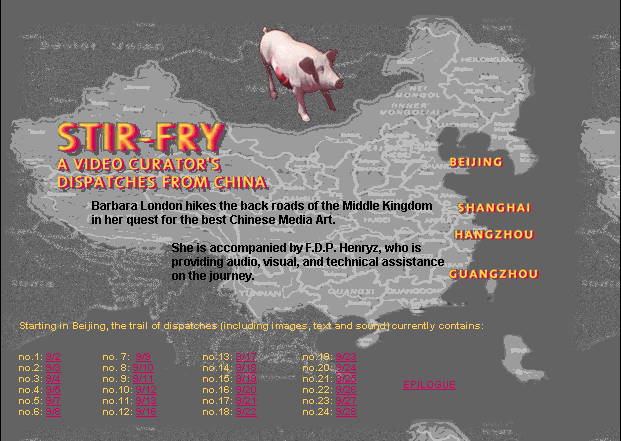
New China/New Visions.
Nov. 24–Dec. 12, 1997
The Chinese democracy movement that was ruthlessly suppressed on June 4, 1989 did not disappear without leaving traces. The filmmakers who graduated that spring became known as the “Sixth Generation.” Rejected by the official studios, they produced independent works that have reached international audiences, presenting a new, often unexpected image of China as an urbanized society undergoing deep cultural and societal changes. As camcorders became more widely available throughout Asia in the early 1990s, conditions ripened for the emergence of an independent video culture in China.
Press Release
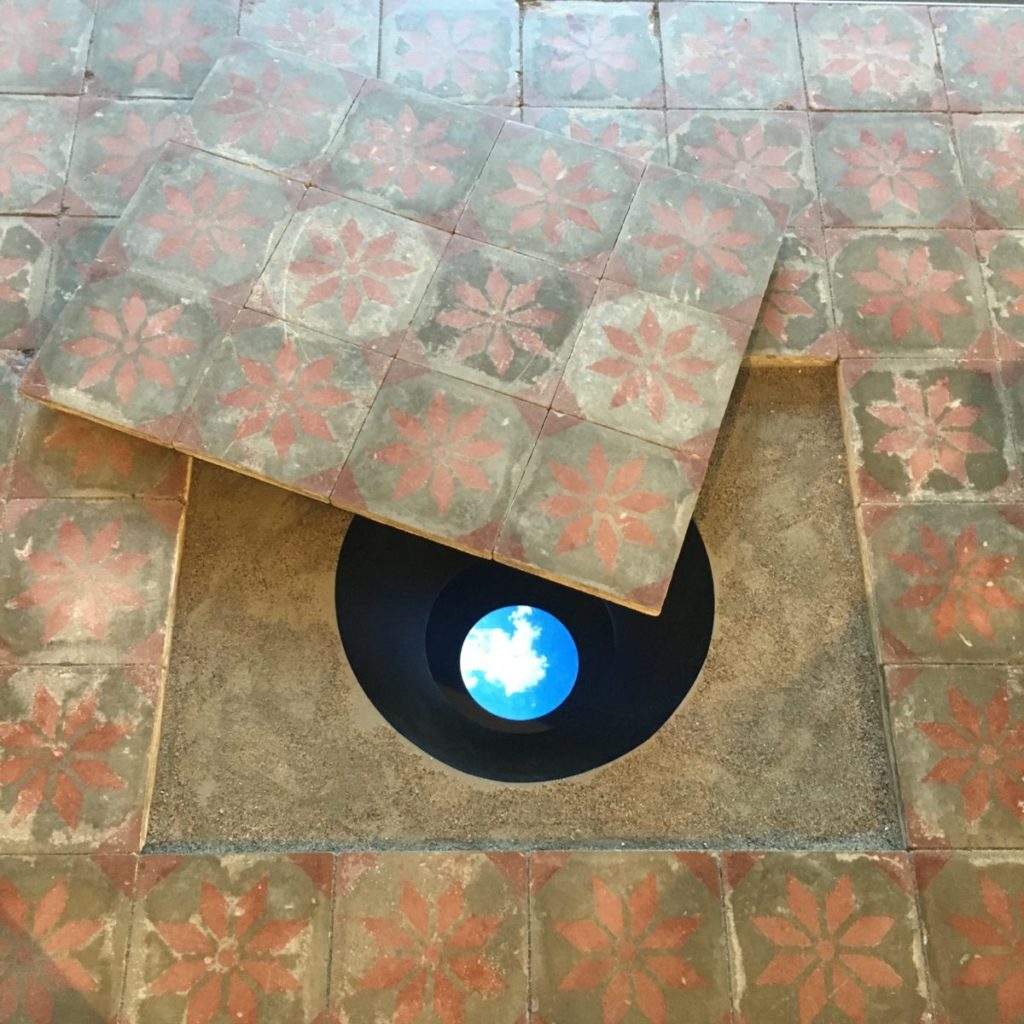
Young and Restless.
Feb, 4–March 30, 1997
A survey of performance-based videos featured twenty-one works by eighteen New York women artists. Created between 1993 and 1997, the videos were often personal, charged with energy, sometimes shot and edited with an unfinished, raw look, and sometimes deceptively pristine and spare. The artists themselves exude a confident self-awareness as they comment on the art world and contemporary life. Organized with Stephen Vitiello and Sally Berger.
Press Release
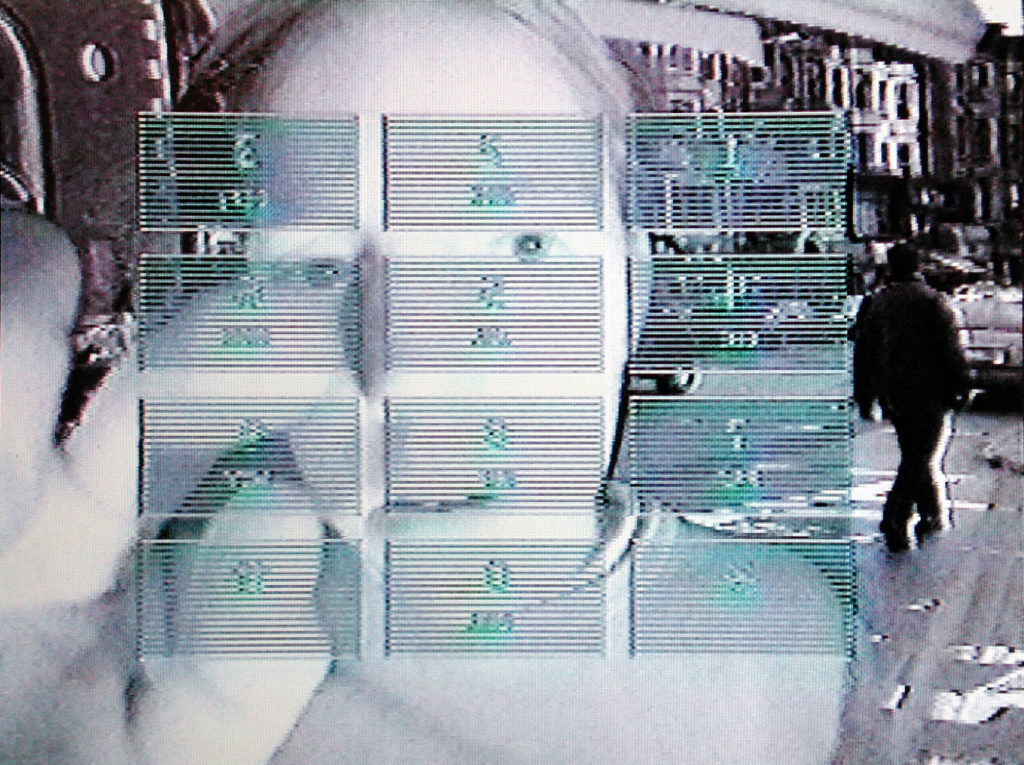
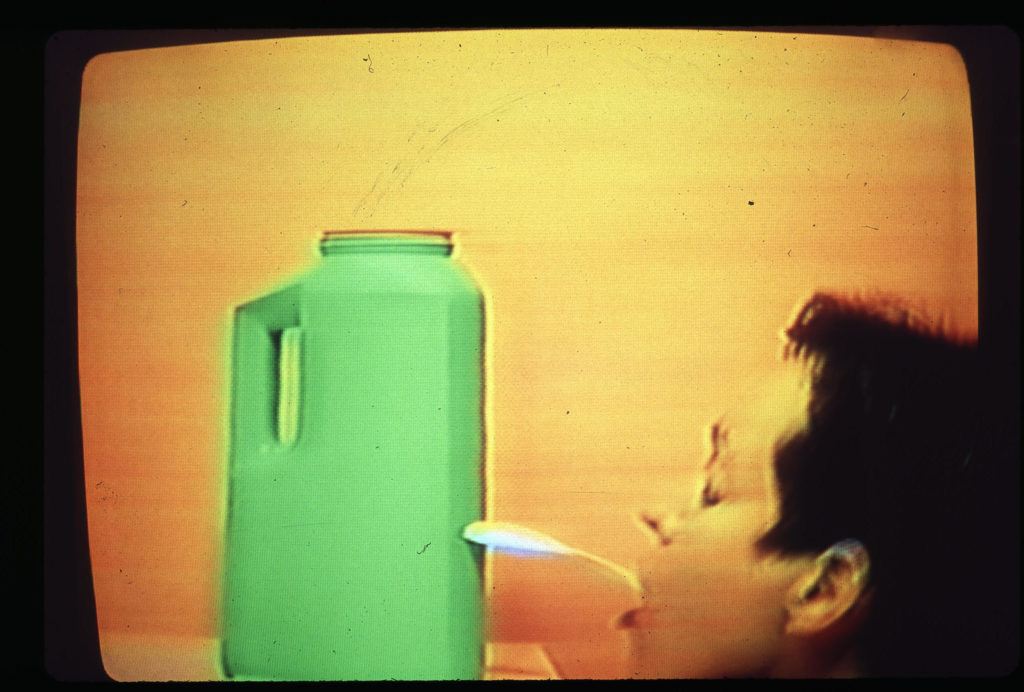
Projects: Bul Lee, Chie Matsui. Jan. 23–March 25, 1997
Chie Matsui (Osaka) and Bul Lee (Seoul) belong to a new generation of outspoken artists who comment on the society around them and on their relationship to it. Like their peers in North America and Europe, they are not bound by particular mediums or local conventions. Over the last ten years, Matsui and Lee have explored performance art and electronic media while concentrating on installation work. This flexible interdisciplinary form suits the “globalized” world of the mid-1990s.
Press Release | Catalogue
Video Spaces: Eight Installations. June 21–Sept. 12, 1995
This was the first exhibition to feature work from the most renowned innovators in the field of video installation. From Asia, North America, and Europe, the participating artists created finely tuned environments that merge architecture, sculpture, and performance. Featured artists were Judith Barry and Brad Miskell (New York), Stan Douglas (Vancouver), Teiji Furuhashi (Kyoto), Gary Hill (Seattle), Chris Marker (Paris), Marcel Odenbach (Cologne), Tony Oursler (New York), and Bill Viola (Long Beach, CA).
Press Release | Catalogue
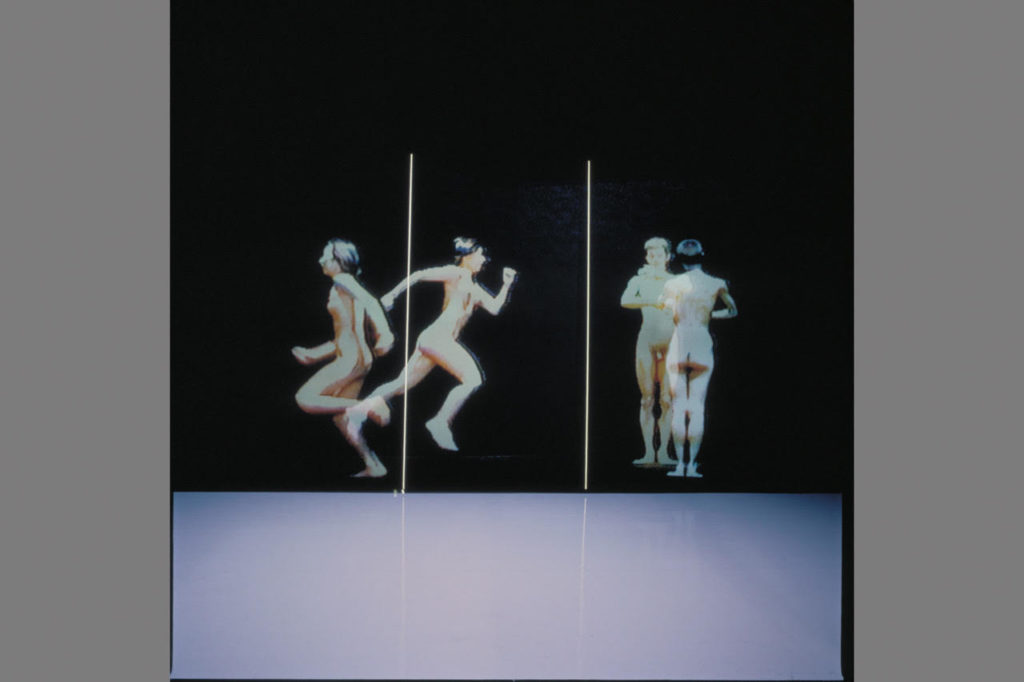
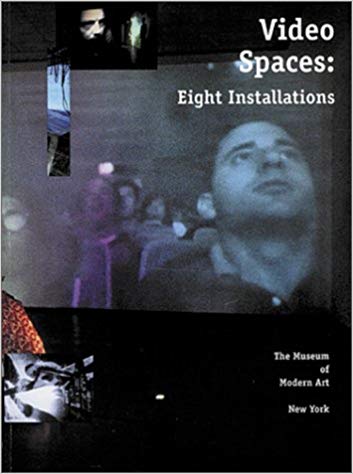
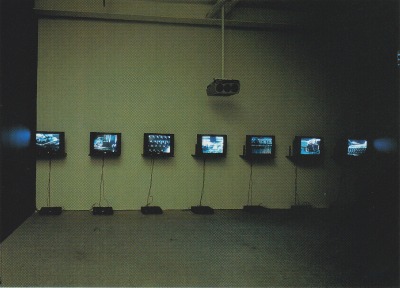
Luc Courchesne: Family Portrait.
June 23-August 23, 1994
Courchesne adapted the art of portraiture to new media. Four simply designed pedestals each portrayed an interactive video of a single character, who appears lost in reverie before she or he engaged in conversation with the viewer. The personages flirted, discussed culinary preferences, or If uninterested in a particular question, turned away.
Press Release | Catalogue
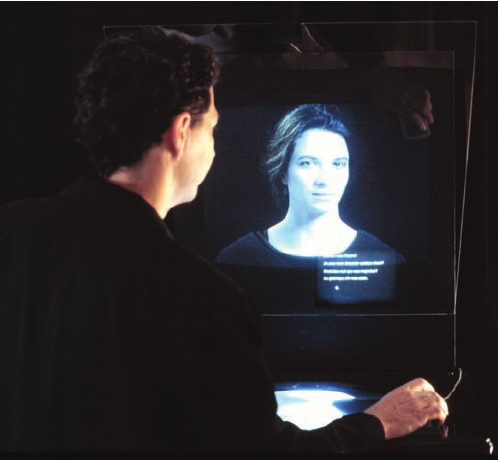
Chris Marker: A Video Selection.
Jan. 7–18, 1994
Eleven recent videotapes demonstrated how the Paris-based artist blended image, text, and idea to create poetic visual essays that expand the boundaries of nonfiction cinema. Works included The Last Bolshevik (1993), Owl’s Legacy (1990), and Slon Tango (1993), in which an elephant lumbers around his enclosure at the zoo, set to music by Stravinsky.
Press Release
Latin America: Video Views.
June 3–Sept. 6, 1993
This exhibition featured the recent work of independent videomakers based in Argentina, Bolivia, Brazil, Chile, Cuba, Ecuador, Panama, Uruguay, and Venezuela. The artists explored issues such as indigenous traditions, contemporary lifestyles, social and political events, and the role of the video today. The artists included Vincent Carelli, Marcelo Tas and Fernando Meirelles, Enrique Alvarez and Arturo Soto, Pablo Lavin, Xontapi Totore Payoroti, Alberto Muenala, Eduardo Lopez Zavala and Cristina Bubba, Victor Lopes, Jorge Furtado, German Bobe, Marcela Poch, Diego Lascano, Lotty Rosenfeld, Boy Olmi and Luis Maria Hermida, Sabrina Farji, Lilian Blaser, Gloria Camiruaga, Nestor Olhagaray, Eder Santos, Guillermo Casanova, Pablo Basulto, Paulo Weidebach and Eduardo Schaal, Carlos Trilnick, Klaudia Kemper, Ar Detroy, Pablo Rodriguez Jauregui, Enrique Aguerre, Luis Franco and Sergio Cambefort.
Press Release
TRAP/bat
Sept. 17-Nov. 9, 1993
A sculptural video installation by John Sturgeon, TRAP/bat is a result of Sturgeon’s work with both verité video production and manipulated imagery.
Press Release
Steve Fagin Retrospective
Oct. 8-11, 1993
The retrospective highlighted four of the artist’s feature length videos, which engage a documentary form. Works included Zero Degrees Latitude (1993), Virtual Play: The Double Direct Monkey Wrench in Black’s Machinery (1984), The Amazing Voyage of Gustave Flaubert and Raymond Roussel (1986), and The Machine That Killed Bad People (1990).
Press Release
Projects: Jana Sterbák.
Nov. 20, 1992–Jan. 5, 1992
Montreal-based artist Jana Sterbák employs metaphors drawn from ancient mythology in her exploration of the boundaries of the body. Her featured installation, Sisyphus, combined an egg-shaped metal sculpture designed to human scale with a film loop showing the apparatus in action—a man inside the sculpture rotating and swiveling as he endlessly loses and regains his balance.
Press Release | Catalogue
Tony Cokes: Word 2 My Mother.
Nov. 18, 1991–Jan. 19, 1992
The African-American artist Tony Cokes’s installation consisted of three primary elements: a documentary portrait of the artist’s mother; computer-animated texts that reinvestigated the documentary material in personal and theoretical terms; and audiotaped excerpts of popular songs from the 1940s and 1950s sung a capella by his mother.
Press Release
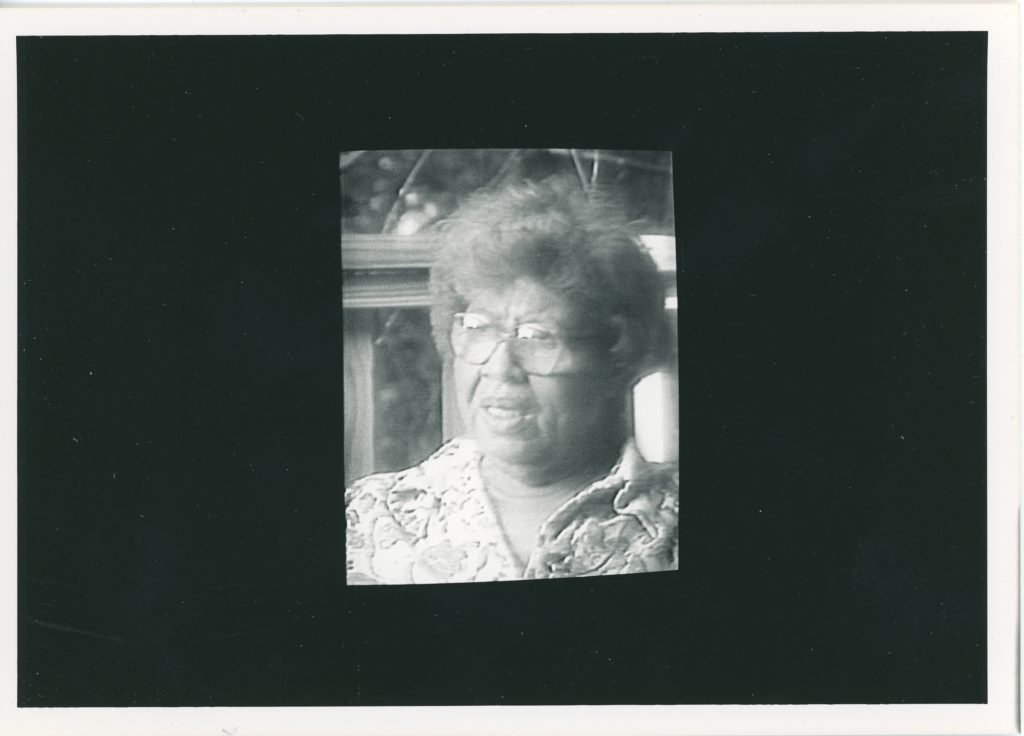
Jean-Luc Godard: Son+Image, 1974–1991. Oct. 30–Nov. 30, 1992
Godard’s video work is as visually and verbally dense as his revolutionary films of the 1960s. This extensive series of work in video, much of which was created in collaboration with Anne-Marie Miéville, is characterized by experimental narrative, densely layered soundtracks, and complex editing techniques. Videos shown as part of this retrospective, comprised of thirty works and a program of commercials, included Histoire(s) du cinéma, Scénario du film “Passion,” Soft and Hard (A Soft Conversation between Two Friends on a Hard Subject), Puissance de la Parole, and Six Fois Deux/Sur et sous la communication.
Press Release
Thierry Kuntzel: Winter.
June 28–Sept. 2, 1991
Thierry Kuntzel’s installation Winter (The Death of Robert Walser) consisted of a large electronic triptych projected directly onto the gallery wall, where the images dissolved into its surface. The central projection showed a solitary motionless male figure lying with his back on the floor. As if in a living tomb, the body displayed the silent anguish of an encounter between life and death. This central panel was set between two rectangular fields of color whose evanescent cobalt blue dissipated, faded to gray, and disappeared, only to reappear again.
Press Release | Catalogue
Gary Hill: INASMUCH as it is Always Already Taking Place.
Oct. 19, 1990–Jan. 6, 1991
Gary Hill’s installation consists of cathode-ray tubes, the light-emitting elements of television monitors, piled in a nest of wires on a shelf. Varying in size, the tubes are stripped of their casings and emit images of parts of the human anatomy.
Press Release
![]() Barbara Steinman, Icon. 1990. Installation (detail). Courtesy the artist
Barbara Steinman, Icon. 1990. Installation (detail). Courtesy the artist
Barbara Steinman: Icon.
May 10–July 31, 1990
Montreal-based Barbara Steinman questioned the dynamic between language representation and power structures in her site-specific installation Icon (1990). The artist used the image of a Madonna to question the meaning of an icon as both a religious and an art object, especially when presented in the context of a museum devoted to twentieth-century art.